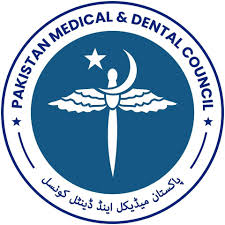Benign Breast Disease Incidence in Patients with Mastalgia: Observations from a Tertiary Care Hospital in Lahore-Pakistan
DOI:
https://doi.org/10.37018/JFJMU/ABE/2487Keywords:
Mastalgia, Benign Breast Diseases, sonographyAbstract
Background: Benign breast diseases (BBD) are a frequent cause of mastalgia, both worldwide and in Pakistan. Hence recognition of BBD using clinical signs and sonographic breast imaging is important to reduce the number of unnecessary radiation exposure in the form of mammography and invasive biopsies and consequently avoid delay in the diagnosis. Thus, this study was conducted to assess the prevalence of the subtypes of BBD in the local population presenting with mastalgia.
Patients and Methods: It was a cross sectional study conducted in Radiology Department of Lahore General Hospital, Lahore from 1st January till 30th June, 2022. Total 301 females fulfilling inclusion criteria referred from Surgery OPD and were enrolled after taking informed consent. Patients were clinically examined to assess and exclude any palpable lumps and to validate mastalgia. Sonographic evaluation of the breast was performed by three independent Consultant Radiologists following updated guidelines. The probe frequency was between 4.5MHz - 9MHz. Other technical parameters were adjusted accordingly. Colour Doppler and spectral Doppler techniques were used to further assess the lesion and categorize into the BBD lesions. Data was analysed by using SPSS version 20.
Results: The mean age of enrolled patient was 31.47 (+10.59) years. The mean duration of symptoms was 5 months. Out of 301 females, the imaging was normal in 89 (29.6%), while 92 (30.6%) patients had findings in right breast, 74 (24.6%) in left and 46 (15.3%) in bilateral breast. Overall, ductal dilatation was most common cause for mastalgia (9.8%). Fibroadenoma being the second most common finding (8.8%). Other causes being non-puerperal mastitis (8.6%), abscess (6.3%) and benign cyst (5.6%).
Conclusion: BBD are the most common cause of mastalgia in our population with duct ectasia being the most common type in second and third decade followed by fibroadenoma.
Published
How to Cite
Issue
Section
License
The Journal of Fatima Jinnah Medical University follows the Attribution Creative Commons-Non commercial (CC BY-NC) license which allows the users to copy and redistribute the material in any medium or format, remix, transform and build upon the material. The users must give credit to the source and indicate, provide a link to the license, and indicate if changes were made. However, the CC By-NC license restricts the use of material for commercial purposes. For further details about the license please check the Creative Commons website. The editorial board of JFJMU strives hard for the authenticity and accuracy of the material published in the journal. However, findings and statements are views of the authors and do not necessarily represent views of the Editorial Board.

















